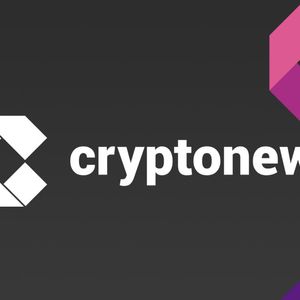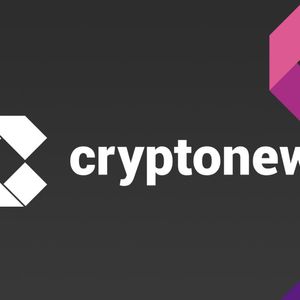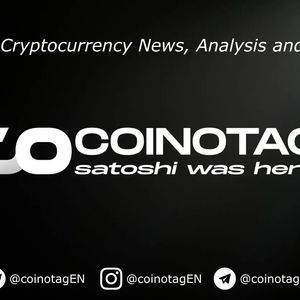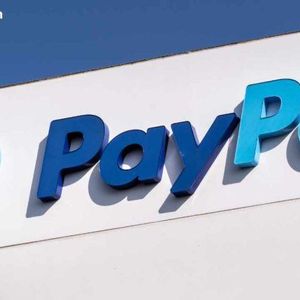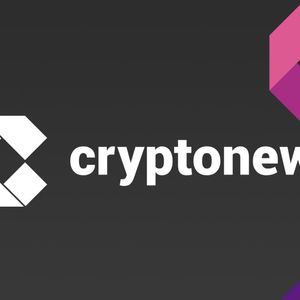Summary MicroStrategy's new BTC Yield metric, showing a 17.8% increase YTD, justifies its 2x premium over its BTC holdings. MSTR's intelligent use of convertible debt to monetize amplified BTC volatility enables superior financing for increasing BTC per share. The recent $30.6 million interest expense reduction signals MSTR's possible debt servicing limits, impacting future BTC purchases and convertible issuances. Despite risks, MSTR's strategy and software business support its BTC acquisition, making it a strong buy for BTC bulls. Presented is a model for valuing MSTR based on BTC Yield, MSTR's beta against BTC, and MSTR's ability to service further debt loads. In the last month, there were a few numbers pertaining to MicroStrategy ( MSTR ) which I think deserves some serious attention. To understand the first number, you need to understand MSTR’s new BTC Yield key performance indicator, which they unveiled in their last earnings call. I wrote a comprehensive article covering the concept of BTC Yield from that earnings call. The introduction of this metric is, in my view, a groundbreaking moment in corporate finance which makes the last earnings call the most important MicroStrategy earnings call ever. I encourage you to read the article to gain full context and also to listen to the Q2 earnings call . In general, BTC Yield is the percentage change in the amount of BTC per diluted share over a given period of the time. MSTR computes diluted shares using the conservative assumption that all convertible debt is converted to shares. So here is the first number: 17% YTD BTC Yield on 13 September. Then a week later on 20 September: 17.8% YTD BTC Yield . The year is only about 75% complete. A 17.8% BTC Yield explains perfectly why MSTR shares trade at a 2x premium to the BTC it holds in reserves. For every 1 BTC you owned through your shares of MSTR on 1 January 2024, you would have 1.178 BTC without doing anything except holding those same MSTR shares as of 20 September 2024. So if these are the raw facts, why should MSTR be trading 1:1 with its BTC holdings? MSTR is clearly not equivalent to holding BTC directly. For every 1 BTC I owned via holding BTC on 1 January, I still only have the same 1 BTC, assuming I did nothing except hold. There is no BTC Yield in holding real BTC. MSTR, however, has a positive BTC Yield. That is all we need to understand the MSTR premium. Breaking It Down Further At the most basic level, let’s just compare the YTD performance of BTC and MSTR. The chart is shown below. MSTR and BTC-USD (Seeking Alpha) There is a positive BTC Yield of 17.8%. So another 17.8% at the very least should be added to the performance of BTC to get to the performance of MSTR. But in practice a lot more than 17.8% will be added by the market because there is the ongoing possibility of BTC Yield increasing even more from here. We can treat the YoY BTC Yield almost like a “floor rate” for YoY growth, assuming nothing else changes. The fact that BTC per share increased needs to be reflected as a source of an outperformance when comparing BTC and MSTR. Also consider that MSTR is leveraged. It currently has about $3.8 billion in long-term debt with a market cap of $35 billion. This means its equity value is around 1.1x levered to its assets value. As it turns out, when you plot the BTC and MSTR daily returns, the regression line has a coefficient (beta) of 1.1 . Therefore, we should see MSTR outperform BTC in bull markets by the leverage alone. Furthermore, there is a software business that, though mediocre, still generates $111 million in quarterly revenue and is clocking in YoY subscription revenue growth even as total revenues have declined YoY. Revenues (MSTR Q2 Presentation) This component of the business is rarely talked about (generally because it isn’t impressive), but it should be noted for its contribution to the overall MSTR BTC acquisition strategy. The revenues allow MSTR to service the debt that is used to purchase more BTC and generate a positive BTC Yield. The last thing to remember is that the “debt” being serviced is not normal debt. It is convertible debt. And as of the last raise of $1.01 billion in convertible notes, the last tranche of “normal” debt was paid off and replaced fully by convertible debt. It's actually difficult to overstate how significant this point is. Convertible notes have a long history of being used by companies to finance operations in a creative way that minimizes cash liabilities. The weakness is that it is dilutive. But the real miracle of using convertible notes is that you are able to monetize the second moment of the distribution of projected ROI. You see, when you issue equity or debt, you are strictly touching the first moment of the distribution of projected ROI – this is simply what is the expected return of your operation, based on a dollar-weighted average across the market. When you issue convertibles, you are attaching a call option to a normal debt issuance. Because options are always protected from one side of an asset’s price action, they are a way to gain access to the variance of that asset. Variance is the second moment of the distribution. Its square root is called “standard deviation,” which is the mathematical name for the financial term we call “volatility.” See how it’s coming together? Selling options, in the form of convertibles or warrants, is a way to pull cash out of the second moment because selling options is selling the volatility of the underlying equity. Put differently, it is drawing funds out of a different dimension from traditional capital markets. This is extremely potent when you add Bitcoin to the mix. Bitcoin is the most volatile trillion-dollar market cap asset the world has ever seen. When you put BTC on your balance sheet and lever it up, your equity now absorbs and magnifies the volatility of BTC. Currently, MSTR options are pricing in an IV of 80-150. This is 5-8x the IV of the S&P 500. And selling call options on your stock is great because as the company, you can always create more shares out of thin air. So this is exactly what MSTR does: Buy BTC with leverage, injecting massive volatility into MSTR shares Sell this volatility in the form of convertibles Take the proceeds to buy even more BTC on leverage (convertibles are still debt) Stock gets even more volatile Sell more volatility in the form of convertibles Repeat All of this— the leveraged capital structure, the software business, the convertibles issuances, the BTC purchases, and the resulting positive BTC Yield— works together for MSTR to outperform every single stock in the S&P 500 since Michael Saylor had the idea to prioritize buying BTC. MSTR vs SP500 ( FactSet / Saylor ) The Second Number Is An Object Of Some Concern The first number was BTC Yield and understanding everything that went into generating a positive BTC Yield. This next number is easier to understand, and I think it is something to watch out for. MSTR completed an upsized $1.01 billion offering on 20 September, which allowed them to boost BTC Yield from 17% to 17.8%. (As a quick aside, this was upsized from a $700 million offer , which just shows the market demand for these convertible issuances. A lot of institutional bond funds cannot purchase BTC or equity, but they can use these convertible notes to gain exposure to something that generates much better returns than normal corporate bonds.) Now, many people might assume that the billion dollars went straight into buying more BTC. This is not what happened. MSTR redeemed $500 million of debt that had a 6.125% interest rate, which was due in 2028. You can see that tranche over here in the Q2 presentation . Principal Debt Maturities (MSTR Q2 Presentation) This has an annual interest expense of $30.6 million, which is the second number of significance that I’m bringing to your attention. Meanwhile, the convertible was issued at 0.625%, which means that the annual interest expense is a bit more than a tenth of the expense on the “normal” debt, assuming the same principal. MSTR made the decision to pay off the “normal” debt by basically refinancing it via convertibles. But… why? Why not just buy BTC with the full $1.01 billion and hold the $500 million to maturity, since BTC’s expected CAGR far exceeds the 6.125% cost of debt? The answer is that MSTR is likely approaching its carrying capacity for servicing debt. This is a hard cap given its revenues. That $30.6 million annual expense had to be removed so that it can be replaced with 5 more issuances of $1 billion in convertibles at 0.625%. Ideally, they would have just kept the $30.6 million annual expense, serviced it with operating cash flows, and proceeded with several more billion dollar convertible note issuances. This would have maximized BTC per share. The fact that they used more than half the proceeds to reduce the interest expense indicates that MSTR is approaching its carrying capacity. Here is another capital structure slide from their presentation, which nicely tabulates the liabilities. Capital structure and intelligent leverage (MSTR Q2 Presentation) That $30.6 million is more than half of the expenses. Now that it is gone, MSTR will likely try to fill the gap with convertible issuances. But because MSTR is already so deep in on monetizing the second moment, raises likely won’t get significantly better from where they are now. It would certainly take a lot to reduce interest expenses even more, now that the last bit of “normal” debt is gone. What's more concerning is that total revenues are actually going down. This further narrows the gap. Unless BTC rises significantly and the subsequent surge in IV allows MSTR to issue convertibles at even closer to 0% rates, we might not see more than $5 billion in BTC purchases from MSTR until after 2030. The other possibility is that MSTR starts to explore creative ways to generate income from its BTC holdings, supplementing the software business revenues and increasing the carrying capacity of interest expenses. This is an inflection point, and it's why the $30.6 million number is important. Valuation Discussion While both numbers and their respective dynamics are very important to be aware of, I think the primary driver of returns is still the fact that MSTR is putting up an impressive BTC Yield. As I covered in the last article , MSTR is projecting a 4-8% BTC Yield per year for the next three years. This year’s 17.8% YTD BTC Yield is therefore a massive anomaly. I think the projection of 4-8% comes from the interest expense carrying capacity and from expectations that BTC will probably be a lot higher over these next few years. Each subsequent $1 billion raise purchases less BTC (also the denominator gets larger as you purchase more BTC, so the percent change in BTC must go down over time, even if the BTC price stays constant). I will assume that the carrying capacity is another $5 to $10 billion of convertible notes proceeds used to buy BTC, spread out over the next 4 years. I think $10 billion could be possible if they can raise at 0.25% interest rates. With the Fed cutting rates and MSTR volatility increasing into a BTC bull run, this might be feasible. We can treat it as a bull case. Now it’s just a question of turning those dollar raises into a BTC Yield metric based on where we think BTC might be over the next few years. Once we have the BTC Yield metric, we can back out a dollar denominated growth for the equity value of MSTR because the BTC Yield is like an alpha on the performance resulting from MSTR’s beta against BTC. There is one last important component to this. The $500 million secured loan’s annual $30.6 million interest expense will be replaced with about $5 billion of convertible debt, issued at varying times over the next few years, with an annual total interest expense of $30 million. This means the leverage ratio goes much higher. We started this article with $3.8 billion in long-term debt. Add another $5 billion and we will have around $9 billion. If the market cap remains where it is, the beta will have increased from 1.1x to 1.3x. So you can do the following exercise yourself with your assumptions, but here are my assumptions: I assume BTC has a CAGR of 45% over the next 5 years I assume MSTR will “front load” capital raises to buy more BTC sooner I assume that each time convertibles are issued, the dilution offsets the BTC per share increase by 20%. So if the amount of BTC held by MSTR increased by 10%, BTC per assumed diluted share would increase by 8% to make up for the dilution of existing shareholders. I assume that the MSTR YoY performance would be the BTC CAGR times the beta for the year, plus the BTC Yield for the year. This is congruent with the observation that BTC Yield should be a “floor” level of growth or the “alpha.” My model looks like this. The yellow areas are filled in with stuff I assumed. The 20% dilution offset is hardcoded into the sheet, so it doesn’t appear in a yellow cell. After 5 years, at 45% BTC CAGR, the model predicts the price to be 972% higher than it is now assuming only $5 billion of convertible issuance is possible. If MSTR can raise $10 billion, then the model predicts a 1170% growth in 5 years. See the orange area in the bottom right. Model (Author) Assuming a 10% BTC CAGR, the numbers come out to the following. Still impressive, but nothing like the first one. This strategy rests mostly on the shoulders of Bitcoin. Model (Author) There are many issues with this analysis. It is very, very rough, to say the least. BTC will certainly not move up in a straight line. Even worse, MSTR will likely be forced to buy more during relative highs and less during relative lows because investors will likely have less appetite for the convertibles during bear markets. The approach to the YoY MSTR stock price growth is also very simplistic. A strong case can be made that beta should stay at 1.1 if BTC is rising too. So perhaps the beta is artificially large in this model, leading to an overestimate of growth. That said, I do think there are many conservative assumptions too. A 20% haircut for dilution is conservative. MSTR is constantly issuing far OTM call options on these convertibles. The last issuance had a 40% conversion premium. There is no reason for the dilution haircut to stay at a flat 20%. $1 billion of new shares (at a premium, too) will eventually be less dilutive as the share count and market cap grows. Secondly, the assumption that BTC Yield will just be added to the product of beta and BTC’s YoY growth is also very conservative. So far, it seems that many multiples of BTC Yield are added to the beta. You will notice that this is a much more realistic way to think about and value MSTR than as a mere “leveraged BTC holding company.” It factors in the actual economic realities and nuances of the Bitcoin strategy and explains why the premium will persist rather than taking the stubborn angle that the market is simply wrong. Also, it includes the impact of the software business, which is the ultimate source of funds to service the debt that buys the BTC. If you believe the software business will shrink, you can reflect that by making the $5 billion convertible notes figure smaller. If you think it will grow, you can bump the $10 billion convertible notes figure higher. Lastly, the model covers how the increase in leverage might affect the stock’s price action. You can go a step further by thinking about how an increase in beta will increase the IV of MSTR and therefore decrease interest expense on convertible issuance and possibly increase BTC Yield. Risk Discussion If BTC collapses in value, the leveraged strategy will lead to enormous capital destruction. Convertible note holders will choose to get the principal back and without the ability to refinance, MSTR shareholders will effectively be liquidated. This was always the core risk of MSTR. And technically, it is the risk of anyone who is fully on the Bitcoin standard. A more nuanced risk is that MSTR severely overestimates its future revenues and cannot service some of its interest expenses. This could put MSTR in the awkward position of having to sell BTC to pay down expenses. If this scenario unfolds, it could get messy. BTC traders might panic sell because it looks like MSTR has finally capitulated and is about to dump more than 1% of the BTC supply on the market. Shareholders might panic sell because it might look like the music has finally stopped. But this scenario would only incur significant volatility— it wouldn’t be a death blow the way a total collapse in BTC’s value would be. One very misplaced risk which I’d like to dispel here is that MSTR’s BTC being held in a subsidiary called MacroStrategy is not an indication that MSTR shareholders don’t actually own the BTC that MicroStrategy reports. I first saw this accusation in an article here on Seeking Alpha. MacroStrategy is shielded from certain claims from debt holders. The logic then goes that because debt holders take priority over equity holders and MacroStrategy assets are shielded from debt holders, it means shareholders don’t actually own the BTC. This logic is totally absurd and probably just comes from a bad place of trying to create sensationalism to catch attention. Ultimately, the BTC is held by various institutional custodians and shareholders can easily enforce their legal claims over the BTC held under MacroStrategy if needed in a lawsuit. If there were really some obscure clause against this, every equity analyst on Wall Street and short seller fund covering MSTR would have sounded the alarms. There’s a reason Kerrisdale’s short thesis had nothing to do with MacroStrategy and everything to do with their misunderstanding of MSTR’s premium. Conclusion I rate MSTR a Buy. It should go a lot higher because it is able to intelligently increase BTC per share. I have many reasons for believing BTC will go a lot higher, but those are covered in other articles. I think the approval of IBIT options is particularly important . I also think the macro setup featuring an imminent surge in fiat liquidity is quite fantastic. That naturally points me towards equities which can passively increase my BTC holdings by increasing BTC per share. If you are bullish on BTC, you should consider a MSTR position because this stock has a very high chance of continuing its outperformance. You shouldn’t feel weird about taking a position: it has outperformed everything in the S&P 500 by a wide margin. Editor's Note: This article was submitted as part of Seeking Alpha's Best Value Idea investment competition , which runs through October 14. With cash prizes, this competition -- open to all analysts -- is one you don't want to miss. If you are interested in becoming an analyst and taking part in the competition, click here to find out more and submit your article today!



